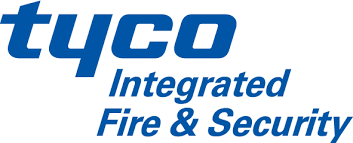How to Enforce Manual Handling Training at Work: A Comprehensive Guide
How to Enforce Manual Handling Training at Work: A Comprehensive Guide
In the modern workplace, the significance of manual handling training is immense. It encompasses a variety of tasks like lifting, pushing, and moving objects, which are prevalent in industries such as manufacturing and construction. However, incorrect techniques often lead to injuries and disorders. This underscores the need for effective training to enhance workplace safety and health.
This article highlights strategies for implementing manual handling training effectively. Emphasizing proper techniques and safety awareness can significantly reduce work-related injuries. By incorporating specialized manual handling courses, organizations not only comply with regulations but also foster a safer, more productive work environment.
Understanding Manual Handling and Its Significance
Manual handling plays a pivotal role in day-to-day operations across numerous sectors. The Health and Safety Executive (HSE) highlights that over a third of all workplace injuries result from improper manual handling. This alarming statistic underscores the critical need for comprehensive training to mitigate risks and protect employees from potential harm.
The Four Key Areas of Manual Handling (TILE)
To effectively manage manual handling risks, it's essential to understand the TILE acronym, which stands for Task, Individual, Load, and Environment. These four key areas provide a framework for assessing and addressing the risks associated with manual tasks.
- Task: Analyzing the activity to identify movements that may pose risks, such as twisting or bending.
- Individual: Considering the physical capabilities and health conditions of employees to tailor tasks accordingly.
- Load: Evaluating the object's size, shape, and weight to ensure safe handling.
- Environment: Assessing the workspace for hazards like uneven floors or restricted spaces.
Five Principles of Manual Handling
The Manual Handling Operations Regulations are a cornerstone in safeguarding employees from injuries related to manual tasks. Adherence to these regulations through the implementation of five key principles substantially elevates workplace safety standards. Below, we elaborate on these principles, breaking them down into digestible segments.
Plan: Strategy Before Action
Assessment is Key: Before initiating any manual handling task, a thorough evaluation of both the task and the surrounding environment is essential. This proactive approach aids in identifying potential hazards and determining the safest method to carry out the task.
Consider Alternatives: Whenever feasible, explore options that might eliminate the need for manual handling altogether, such as using mechanical aids. Planning also involves determining the best route for transportation, ensuring it is free of obstructions and risks.
Position: The Foundation of Safety
Ergonomic Alignment: Adopting a posture that aligns with ergonomic principles is fundamental. This includes keeping the spine in a natural position, avoiding twisting or overreaching, and ensuring that feet are positioned for optimal balance and support.
Stable Base: A stable and efficient posture involves standing with feet shoulder-width apart, providing a solid base for any lifting or moving activities. This stance ensures maximum stability and power while minimizing the risk of injury.
Pick: Technique Matters
Close and Aligned: When lifting, the load should be kept as close to the body as possible. This minimizes the leverage effect against the spine and reduces the strain on back muscles.
Use of Legs: Emphasize the importance of bending at the knees and using the legs to lift, rather than the back. This technique leverages the stronger leg muscles, thereby protecting the back from undue stress.
Proceed: Movement with Mindfulness
Clear Path: Ensure that the route is clear of any obstacles or hazards. It's crucial to maintain a clear line of sight while moving, to avoid trips or collisions.
Smooth and Steady: The movement from one point to another should be executed smoothly and without sudden jerks. Encourage workers to take their time, emphasizing that safety takes precedence over speed.
Place: End with Care
Gentle Descent: Lowering the load should be done carefully and controlled, to avoid abrupt movements that could lead to muscle strain or injury.
Final Positioning: Once the load is at the desired location, ensure it's placed securely and in a manner that doesn't require awkward postures to release. This final step is as crucial as the initial lift, often overlooked in the haste to complete the task.
Implementing these five principles with thoroughness and consistency can significantly reduce the risk of manual handling injuries in the workplace. Regular training and refreshers on these principles are essential to keep safety practices at the forefront of employees' minds, ensuring a culture of safety and well-being.
Enforcing Manual Handling Training: A Step-by-Step Guide
Training is at the heart of preventing manual handling injuries. A well-structured training program empowers employees with the knowledge and skills to perform tasks safely. Here are comprehensive steps to enforce manual handling training effectively:
1. Develop a Customized Training Program
Create a training curriculum that reflects the specific needs of your workplace and the tasks employees perform. Incorporate practical sessions where workers can practice safe handling techniques under supervision.
2. Utilize Engaging and Interactive Methods
Incorporate visual aids, demonstrations, and hands-on practice to make training sessions more engaging and effective. Interactive methods help reinforce learning and ensure employees can apply the techniques in real-world scenarios.
3. Conduct Regular Risk Assessments
Perform regular manual handling risk assessments to identify potential hazards and update training programs accordingly. This proactive approach helps adapt training to changing workplace conditions or tasks.
4. Provide Access to Mechanical Aids
Equip your workforce with mechanical aids such as trolleys or lift-assist devices. Training should include proper usage of these aids to reduce the physical strain associated with manual handling.
5. Monitor and Evaluate Training Effectiveness
Establish metrics to assess the impact of training on reducing injuries and improving safety practices. Feedback from employees can also provide valuable insights for refining training programs.
6. Foster a Culture of Safety
Promote a workplace culture where safety is a shared responsibility. Encourage employees to voice concerns, share insights, and participate actively in safety initiatives.
7. Stay Informed on Best Practices
Keep abreast of the latest research, guidelines, and technologies in manual handling and ergonomics. Continuous learning enables organizations to implement the most effective strategies for preventing injuries.
8. Implement a Continuous Improvement Process
View manual handling training as an ongoing process. Regularly review and update training materials, practices, and policies to reflect new insights, feedback, and technological advancements.
Conclusion
Enforcing manual handling training is not just a regulatory requirement; it's a crucial investment in the health and safety of your workforce. By understanding the principles of manual handling, developing engaging training programs, and fostering a culture of safety, organizations can significantly reduce the risk of injuries. Remember, a well-trained team is not only safer but also more productive and engaged.












